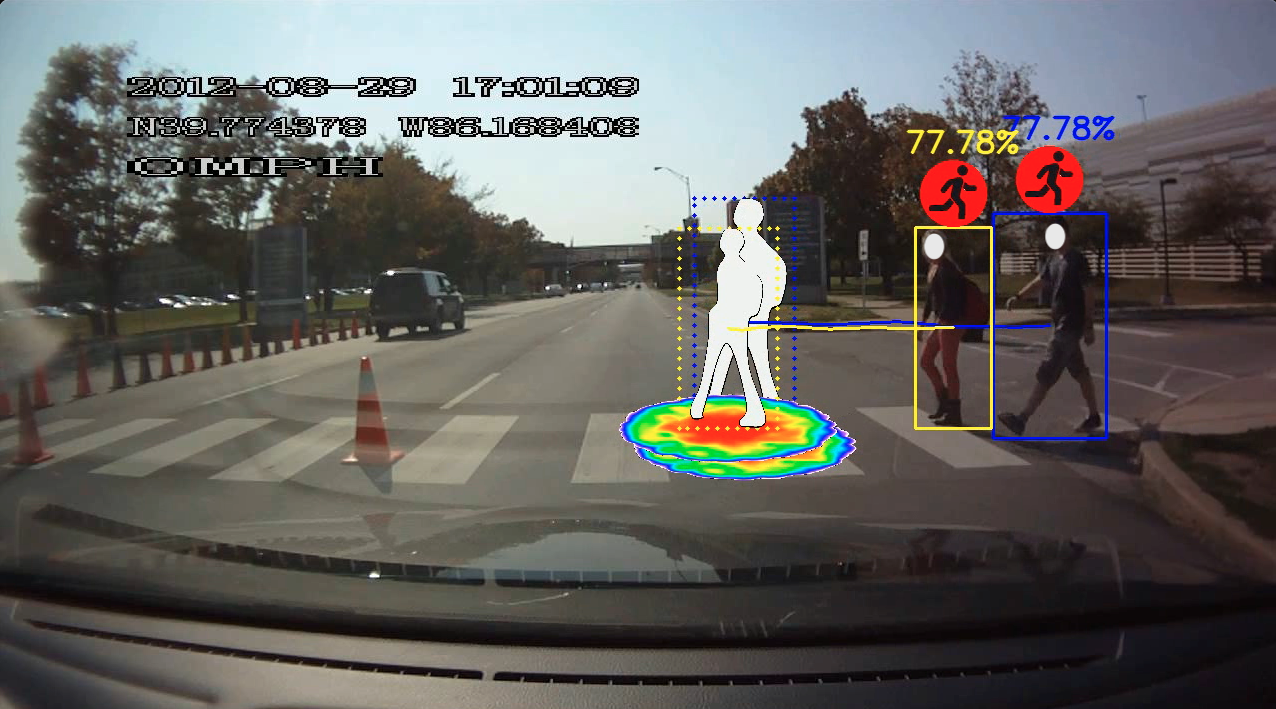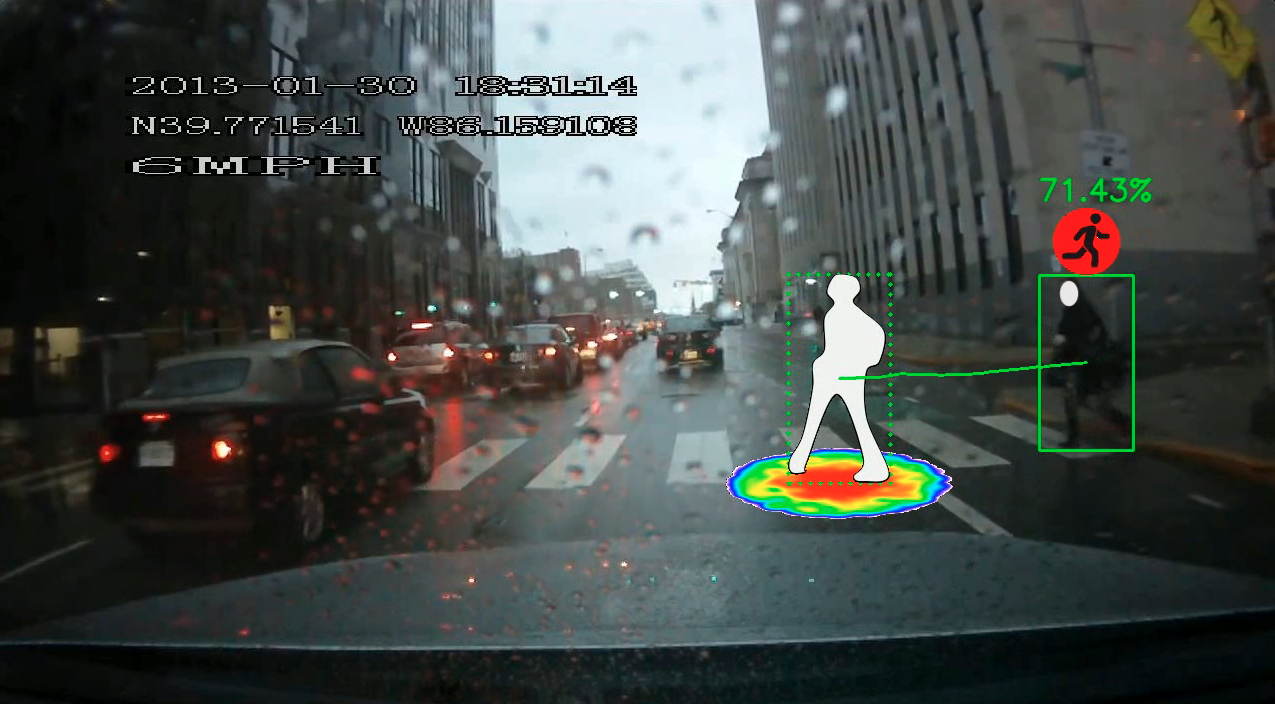(PSI2.0 is an extension dataset based on the PSI1.0 dataset.)
- 20230606: The official [Homepage], [GitHub], and [CodaLab (Track 1)(Track 2)(Track 3)] of the IEEE ITSS Student Competition are public.
Please refer to PSI dataset for the details of PSI dataset and data structure.
(0) Arguments
# Experimental Setting
Input: Observed video sequence + target pedestrian bounding box sequence
Output: Future trajectory prediction (bounding boxes sequence)
Observed sequence length: 15 frames (0.5s for 30 fps)
Predicted sequence length: 45 frames (1.5s for 30 fps)
Overlap rate: 0.9 for traingin/validation, 1 for test
(To sample tracks with stride length = len(observed_sequence_length) * overlap rate
Video Splits:
('./splits/PSI200_split.json')
- Train: Video_0001 ~ Video_0110
- Val: Video_0111 ~ Video_0146
- Test: Video_0147 ~ Video_0204
('./splits/PSI100_split.json')
- Train: Video_0001 ~ Video_0082
- Val: Video_0083 ~ Video_0088
- Test: Video_0089 ~ Video_0110
(1) Generate database
./database/create_database(args)
python create_database.py --dataset_root_path E:/Datasets/PSI_2_dataset --database_path E:/Datasets/PSI_2_dataset/database
Organize the data into format as:
db = {
- *video_name*: { # video name
- *pedestrian_id*: { # target pedestrian name
- 'frames': [0, 1, 2, ...], # list of frames that the target pedestrian appear
- 'cv_annotations': {
- 'track_id': *track_id*, # target pedestrian's track_id, obtained from raw annoation
- 'bbox': [[xtl, ytl, xbr, ybr], [], [], ...], # list of bounding boxes of the target pedestrian appeared
},
- 'nlp_annotations': {
- *annotator_id*: { # annotator's id/name
- 'intent': [], # list of crossing itnent at speific frame, extended from key-frame annotations
- 'description': [], # list of explanation of the intent estimation for every frame from the current annotator_id
- 'key_frame': [] # if the specific frame is key-frame, directly annotated by the annotator. 0-NOT key-frame, 1-key-frame
},
...
}
}
}
}Pedestrian trajectory ground-truth:
The ground-truth trajectory is the sequence of positions (bounding boxes) of the target pedestrian in the future time steps.
(2) training / validation / test split
Our splits are provided in ./splits. Specifically, for PSI100, all videos are splited into train/val/test as ratio
(3) Run training
python main.py(4) Evaluation Metrics
ADE: Average Displacement Error
FDE: Final Displacement Error
ARB:
FRB:
| Dataset | split | ADE | FDE | ARB | FRB |
|---|---|---|---|---|---|
| PSI 2.0 | val | ||||
| PSI 2.0 | test | ||||
| PSI 1.0 | val | ||||
| PSI 1.0 | test |
(4). Environment
Python 3.8
PyTorch 1.10.0 + Cuda 111
Tensorboard 2.10.1
(5) Notes
This baseline only take the bounding boxes sequence of the target pedestrian as input. However, PSI contains various multi-modal annotations and information available for further exploration to contribute to the intent prediction. E.g., Video sequence, other road users bounding boxes, detailed text-based explanation annotations, etc.
[1] Tina Chen, Taotao Jing, Renran Tian, Yaobin Chen, Joshua Domeyer, Heishiro Toyoda, Rini Sherony, Zhengming Ding. "Psi: A pedestrian behavior dataset for socially intelligent autonomous car." arXiv preprint arXiv:2112.02604 (2021).
[2] Chen, Tina, Renran Tian, and Zhengming Ding. "Visual reasoning using graph convolutional networks for predicting pedestrian crossing intention." In Proceedings of the IEEE/CVF International Conference on Computer Vision, pp. 3103-3109. 2021.
Please feel free to send any questions or comments to psi.intent.benchmark@gmail.com

